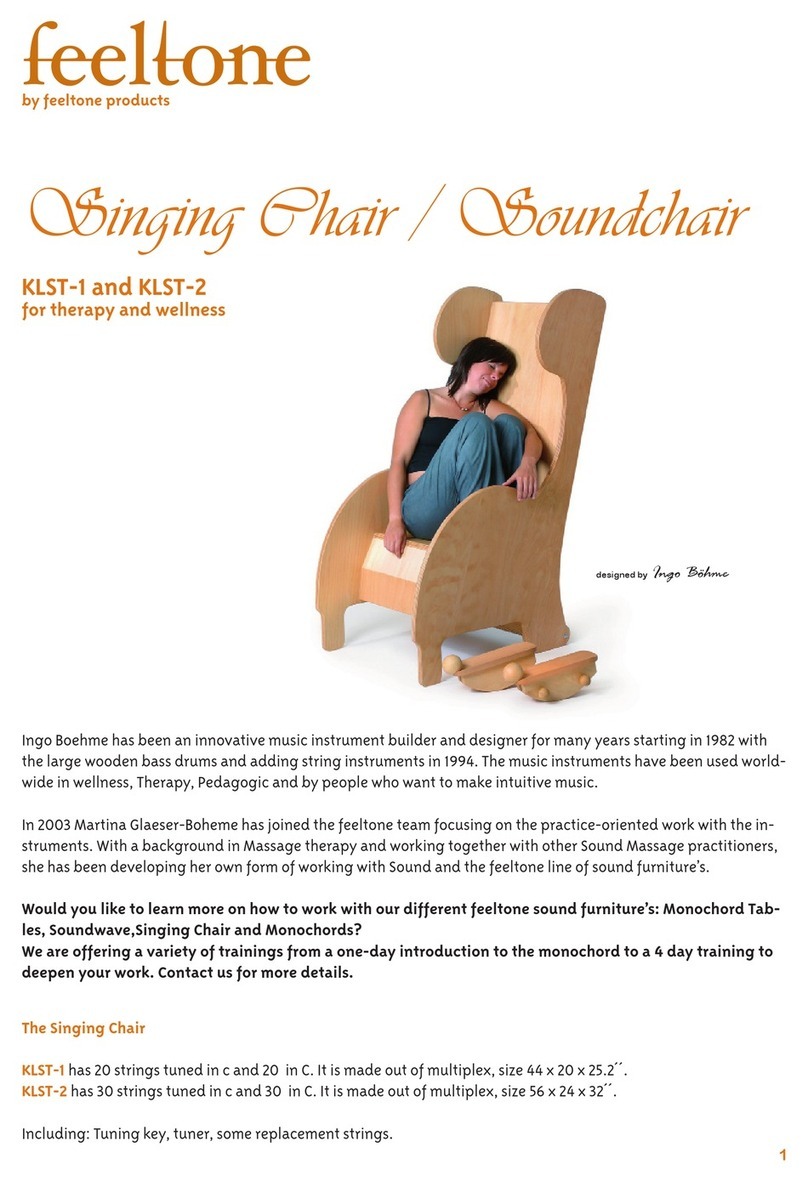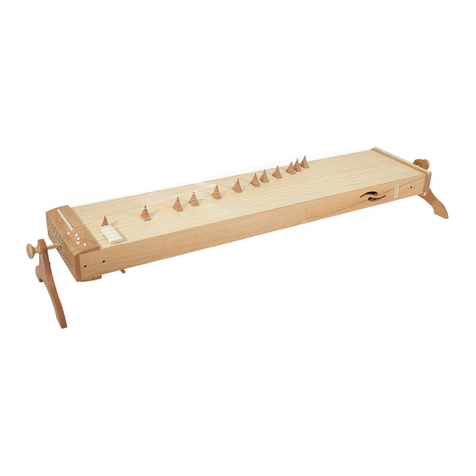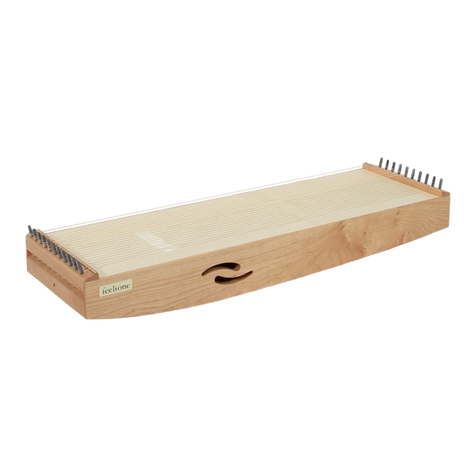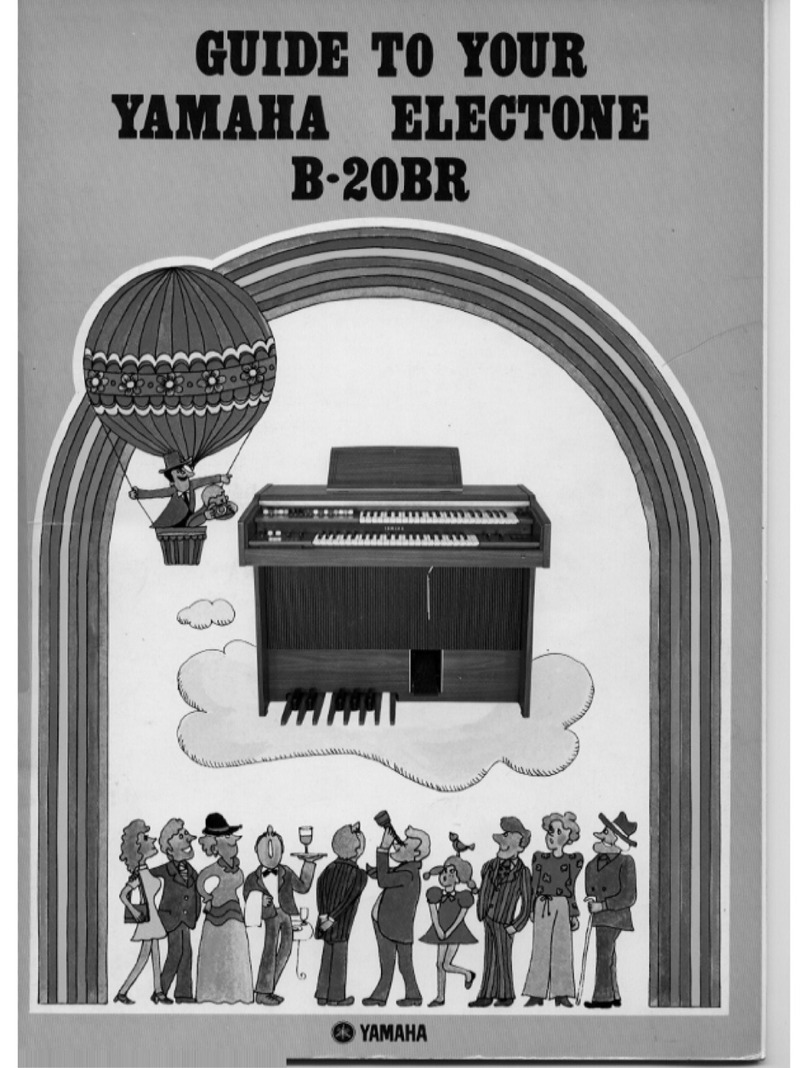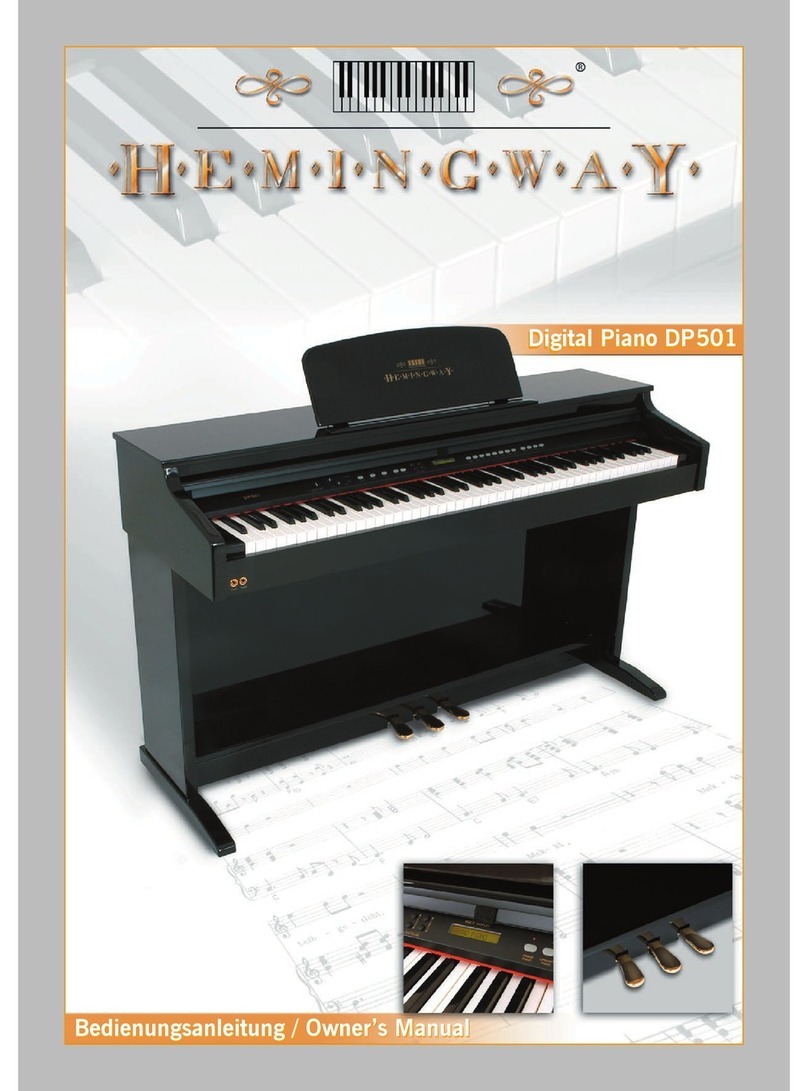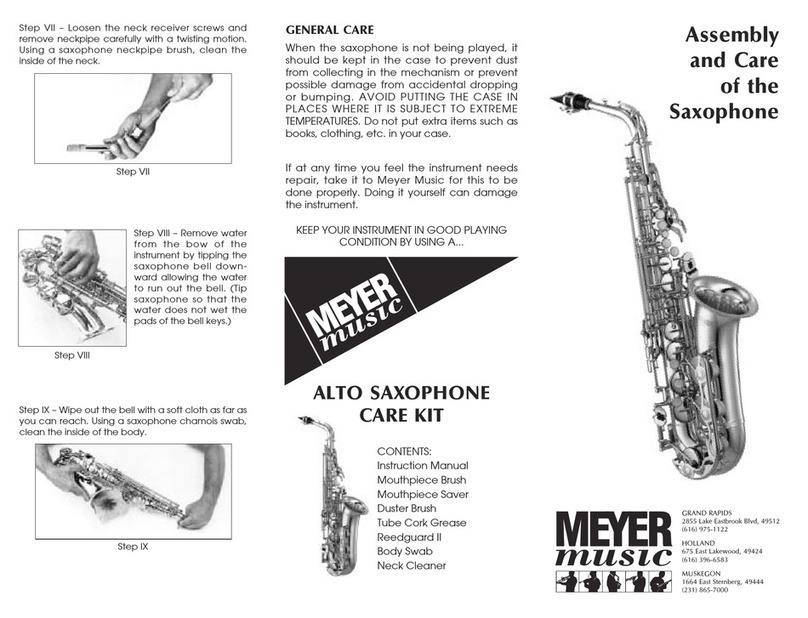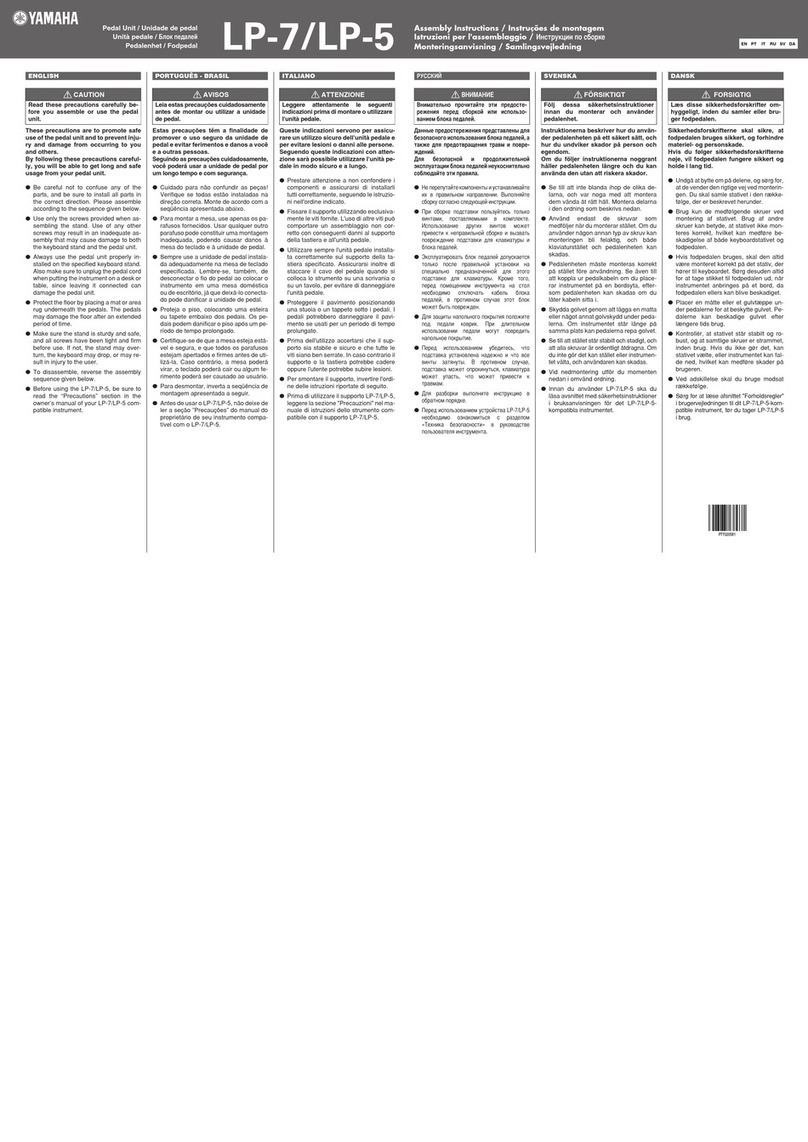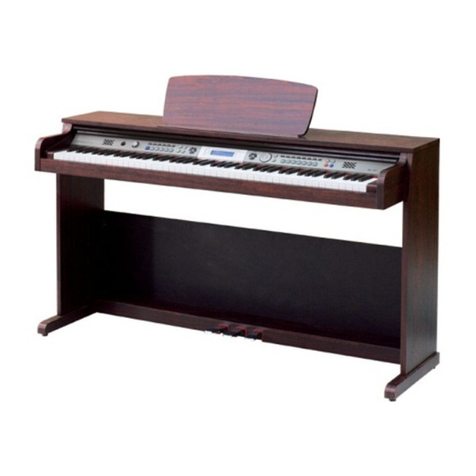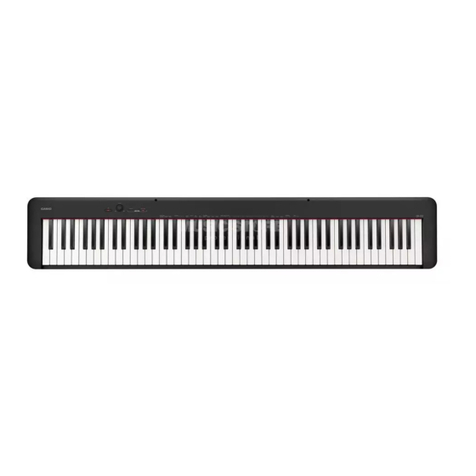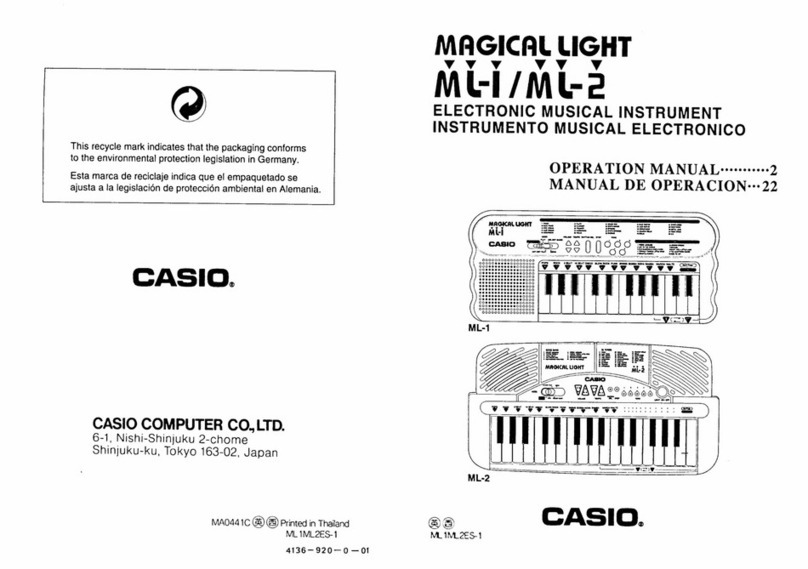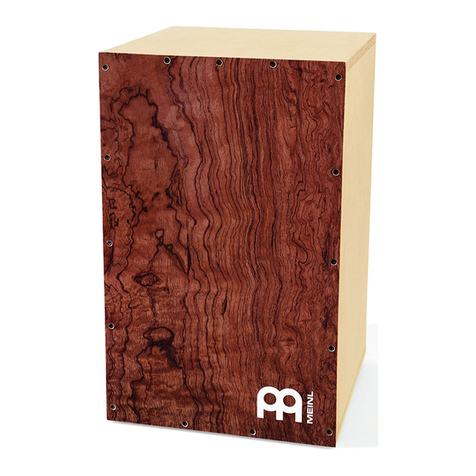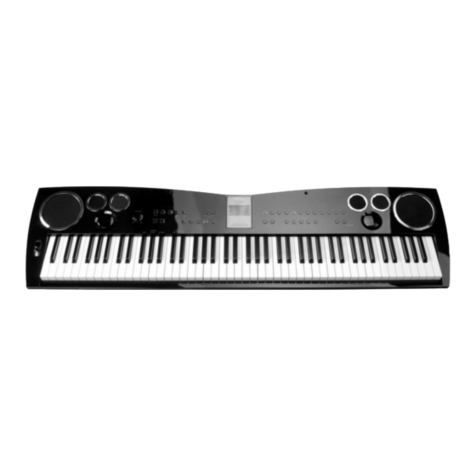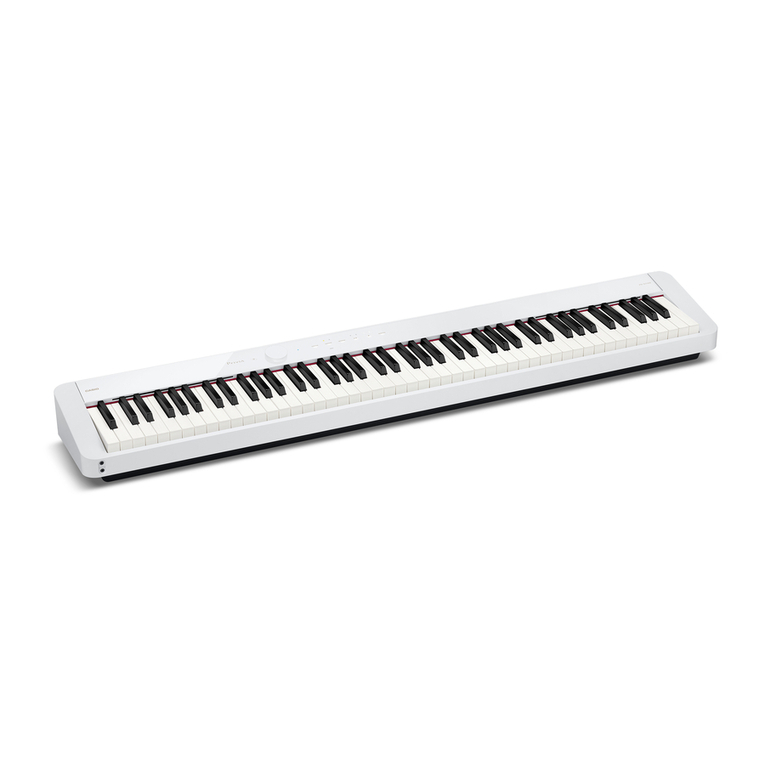FEELTONE monchair User manual

designed by Ingo Böhme
by feeltone products
1
the playful easiness of the singing chair
Ingo Boehme has been developing and designing musical instruments for intuitive music and therapy since 1982.
Beginning in 2003, Martina Glaser-Boehme has integrated the feeltone sound vibration instruments into her sound
and massage practice. She has also developed training material for the feeltone instruments that she teaches
worldwide.
Their cooperation inspired the creation of the monchair. The design, its visual lightness, and sonority makes mon-
chair a one of a kind sound furniture. Truly eye catching and worthwhile to listen to, the chair is soothing with its
lulling vibrations, soft seat and headrest.
monchair - invites you to indulge yourself with sound and vibration.
A pleasantly vibrating ‘flying sound carpet’ will sweep you away from the stress of your everyday activities and
transform you to a pleasantly mindful, relaxed state in only 5 minutes as your breathing and heart rate will slow
down. During the session, a sense of deep relaxation on all levels arises.
In a light and playful way, people experience a soothing vibration, creating a gentle massage which invokes a state
of calmness and an in the moment awareness which is often lacking in our daily lives.
www.feeltone.com
Birke | birch
66 x 72 x 126 cm | 26“ x 27.6“ x 50““
27 kg | 59 pounds

2
Tuning
• Monochord tuning
16 overtone strings in d, 20 bass strings in D,
4 fifth strings in A
• Tambura tuning
sets of 4 strings A d d D repeated 10 times
monchair has 40 strings and is made out of birch.
fully assembled: 27,6” x 26” x 50”, weight : 59 pounds (27 kg)
Inclusive: 1 tuning key, 1 tuner, replacement strings
This compact and easy to use tuner encompasses the whole range of tones from C1 (32,70Hz) to C8 (4186,01Hz) .
Our recommendation for the tuning is to set the tuner to 432 or 440 Hz (a).
If the tuner is set an another frequency you can change the frequence by pressing the button (d).
This tuner works best when used in a low noise environment.
This tuner displays the notes like this: C,D,E,F,G,A,B, no matter which octave .
For example c‘ and c will be displayed as „C“.
(a) (b) (c) (d) (on/off)
The tuner
The included tuner is designed to be used in a silent environment. If you have to tune in a noisy
environment we recomment a clipon tuner (CA-AW3G) or a contact microphone (CA-CM200).
This allows you to tune independent of the noise level around you.
Both are not included and can be purchased through feeltone.
Features
• weight capacity 330 lbs
• ergonomically designed seat
• stable design, to avoid over-stimulation of the equili-
brium through combining the effects of the vibration of
sound with the movement of the chair (rocking, swinging)
• all surfaces are treated with organic oils
• German designed and manufactured.
• easy to assemble
• small transport volume

3
The tuning process
Please notice that you only need to move the tuning key slightly,
one degree at a time to change the note.
For example half a turn of the tuning key will move the tone
up several notes and that could even cause the string to break.
We ship the instrument pretuned. But because strings and wood are reacting with temperature you will need to
tune the instrument upon arrival and after a couple of retunings it will keep its tuning for long period of time.
Let the instrument rest and acclimate to the new surrounding. After the instrument was unpacked and had
rested for a day use the tuning key and the tuner coming with the instrument to tune it.
First tuning:
This example assumes you are tuning the instrument to C.
Put the tuning key onto the first peg , plug the string and look at the tuner
( Which you have turned on and set to 432 or 440Hz) .
-> displayed tone is C and the needle is left from the center or displayed tone is even a deeper note (A# / B)
= the tone is to low, you need to tighten the string
--> to tune to a higher pitch you have to move the tuner clockwise
-> displayed tone is C and the needle right from the center or displayed tone is even a higher note (C# / D)
= the tone is to high, you need to loosen the string.
--> to lower the pitch you have to turn the tuner counterclockwise
Just relax and listen to the sound and you will get into it quickly.
The string is tuned correctly when the needle of the tuner is in the middle and the green LED (b) is on.
Tip 1: If you didn`t meet the tone exactly, loosen the string a little bit and start it again.
Tip2: Try to much the exact tone with a slow and smooth turn of the tuning key.
Continue to tune the other strings. Because the pegs are on the right and on the left side, it might be easier to tune
the pegs on one side, then turn the instrument around and tune the other side.
Second tuning:
We recommend a proper tuning every day for at least two weeks. Don’t worry if you don’t have time every day,
even if you tune every other day it just takes a little bit longer for the instrument to stabilize.
After this period the tone will be stable for a long time and even under changed conditions. Perhaps you think that
tuning is a lot of work. But this procedure helps you to connect to the instrument, to hear the right tone, the overto-
nes and other sound phenomena.
If you use sound in pedagogic or therapeutic settings,
you can use the event of tuning as a kind of awareness test.
For a clear, overtone rich sound, a proper tuning is very important!
The setting for the tuner can be between 440 -432 Hertz (Hz). Use 432 Hz
for a natural harmonic tone. If you are playing this instrument together
with other kind of traditional instruments use 440 Hz to be compatible.
You find more information about this topic in the internet.

4
1.)Take the new string , put it on the nail and then pull the string through the peg hole on the other side of the inst-
rument.
2.)Take 1/2 inch of the end of the string and bend it down at a 90 degree angle, using your fingers or a small pliers.
Than pull the string back so the bent down piece of the string points downwards at the peg. You want the first two
winding of the string to go over the bent down piece of string. If this sounds confusing just look at the other pegs
which already have strings on them so you see the end result.
3.)Start to turn the tuning key clockwise to slightly tighten the string. Guide the string so that the first two windings
of the strings will be over the bent down end of the string the next ones below that.
4.)Bevor tightening the string make sure that the string is in the right position.
Now you can start the tuning process (see „the tuning process“).
Important only use the original strings as they are custom made to fit the instrument.
How to replace a broken string
If a string is broken, first remove the string completely.
Look at the other strings of the same typ: how often are they
twisted around the pegs? Please turn the peg of the bro-
ken string counterclockwise just as often!
If you don’t do this the peg will be pushed deeper and
deeper in the wood during the tuning process and either the
peg will break or the wood will split.
Now aline the peg, so the hole in the peg should point to-
ward the string side.
Check out our videos on YouTube at the feeltone products channel!
Here you will find more information
• about our instruments,
• exampels how to play them
• tuning tips and more!
www.tinyurl.com/feeltone
or www.youtube.com/channel/UCVsN6xeKSfgwZODzRAMt38g

How to play - introducton
If you use your finger and move it in an evenly, steady and calm rhythm across the strings you will create a sound
space that allows your client to unwind and move into a relaxed state. By using both hands you can create a ‘flying’
sound carpet` by making sure one hand alternates with the other while you move over the strings from one side to
the other creating a continuous sound.
5
Less is more!
Invite variations.
Intuitively you will change the direction you are play-
ing or the position on the string. Strum all 40 strings
by moving your hands on an imaginary line across
the string or play just a couple of strings.
Be attentive. Follow the movement of your hands
and listen to the sound you are creating while you
are sitting or standing behind the chair. monchair
is effective in a play time of 5-15 minutes, depending
on the needs of the client.
It is easy to play monchair with the tambura tuning. If you string the strings evenly with your fingers you will crea-
te overtones which have rich harmonics. The tunes D d d A repeat 10 times in the 40 strings creating a rich sound
environment. It embraces and holds you in a relaxing environment without any prior training. monchair with tam-
bura tunings is great for places where the chair is exposed to new people all the time, who want to play and enjoy
the Singing Chair with each other. Great to use in settings like offices, hotels, wellness and care facilities.
monchair with the monochord tuning allows you to create a more nuanced play. The strings are tuned to D and
the higher octave d. This allows the player more creative possibilities to excite the many finer and subtle overtones.
You can vary the pitches and focus on the deeper tones in D which have more vibration or string d to create more
overtones.
Our hands-on workshops will give you the opportunity to play,
experience, and learn more about the feeltone monochords and our
different sound furnitures
from the smaller Monolini / Monlina Therapy monochords , the larger
concert and mediation monochords and the Soundwave and Mono-
chord table.
While these instruments are completely intuitive and require no prior
musical knowledge or ability to play, specific techniques are offered
in this training that will deeply improve your ability to play the inst-
ruments with beauty, ease, and a variety of colors, as well as to evoke
the elements of nature and to hold a deeply meditative space when
playing for others.
Why we offer feeltone monochord trainings and workshops
All of these techniques can be used for sound massage, group meditation sessions, to accompany singing and
voice work, or to enhance any kind of hands-on healing work from acupuncture to massage therapy.
We are offering a variety of trainings from a one-day introduction to the monochord to a 4 day training to deepen
your work. Contact us for more details.
www.feeltone.com/Seminare_Startseite.html
www.feeltoneusa.com

6
Care and warranty instructions
monchair is designed for indoor use only. A climate with even temperature and humidity will help any string inst-
rument to stays in tune for longer periods of time. Exposing the wood to direct sunlight for extended times might
result in discoloring of the wood.
Wood cleaning
You can use any wood furniture cleaner that is appropriate for wood surfaces treated with hardwax oil. Use a soft
cloth and dampen it slightly with the cleaner. Do not leave moisture or drops on the wood surface as this might
create stains.
Strings
It is normal for strings to tarnish and that does not affect their sound or durability and becomes the normal patina
of the instrument. You can slow down the tarnishing process by making sure to wash your hands before playing or
wipe down the strings after playing with for example a fast-fret string cleaner.
Upholstery „antique“:
made out of 100% top quality robust polyester.
You can use a soft and damp rag to clean the cover. Make sure the cover is completely dry before sitting on the
chair again to avoid folds or pressure marks. In addition you can use your vacuum with the upholstery cleaning
attachments or a soft brush on the dry covers.
If an accident happens and you have a stain it is better to deal with the stain while it is fresh and not dried in. You
can make a solution out of lukewarm water and mild soap and use a spray bottle for application. Try to avoid harsh
chemicals and if in doubt checkin with a local cleaner expert and test the chemicals in an hidden area.
Avoid to rub or scrape the cover surface as this could result in discoloration.
If there is any foam left use a soft rag to wipe it off and reapply water ,repeat this till you can be sure you complete-
ly removed the cleaning agents. Avoid soaking the chair covers to keep the padding of the chair dry.
Synthetic Leather.
You can use a soft and damp rag to clean the cover.
If an accident happens and you have a stain it is better to deal with the stain while it is fresh and not dried in. You
can make a solution out of lukewarm water and mild soap and use a spray bottle for application. Try to avoid harsh
chemicals and if in doubt checkin with a local cleaner expert and test the chemicals in an hidden area.
Avoid to rub or scrape the cover surface as this could result in discoloration.
If there is any foam left use a soft rag to wipe it off , rinse with water and repeat this till you can be sure you com-
pletely removed the cleaning agents.
Please note that our warranty is voided, if you don’t follow the care instructions.
Feedback
We love to hear back from you about your experiences, suggestions or comments while working with our instru-
ments.
Table of contents
Other FEELTONE Musical Instrument manuals

